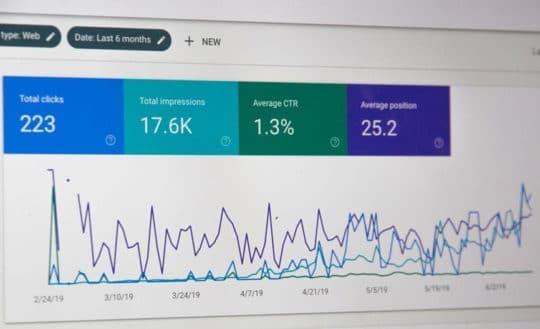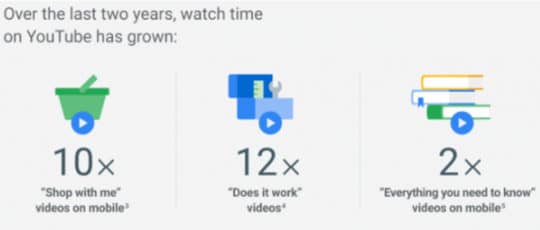All of us know that ‘content’ is one of three major pillars of for the ranking considerations at Google but how many of you limit the content to ‘only texts’? Today, we are going to talk about the non-textual types of content and how you can level up your SEO game to improve your ranking.
The SEO strategists have been pretty vocal about the methods related to the text-based information over the course of time. But the newbies in the town often meet non-textual content with less considerate SEO efforts. However, I have found them quite appealing for the audience as the “organic traffic magnets” throughout my digital marketing career.
While Google or any other browser has never disclosed a word or two about what kind of content and up to what extent they impact the ranking behavior, most of the people don’t know how this stuff works. That’s where the SEO community kicks in with tons of large databases that enthralls us since the dawn of our online pursuits.
So, buckle up to optimize your website with all the content types to ensure that sweet spot on the SERP as we decode the jargon here. But before we start, check out these statistics below.
Are you Missing the Non-Textual Content SEO Advantage?

- Voice and image searches will secure at least 50% of the total volume by 2020. (Vox | recode)
- Tenor (now a sub-brand of Google) entertains a staggering 12 billion GIF searches per month figure. (TechCrunch)
- Having a video on your website’s landing page will up your chances of showing on Google’s first page by 53%. (HubSpot)
- 72% of the people owning voice-activated speakers use them in their daily routines. (Google)
- Users will spend more time looking at images than the text if they find it relevant. (Nielsen Norman Group)
- The average listener consumes 7 podcasts every week. (LinkedIn SlideShare)

A quick checklist of the non-textual content we are going to discuss for SEO optimization purposes:
- Images.
- GIFs.
- Videos.
- Audios.
- Infographics.
- Podcasts.
Recommended for you: The Essential SEO Audit Guide You Should Try for Your Site in 2019-20.
Image Optimization:

Image link building is real and no matter if you are targeting to rank the image independently or optimize your textual content, image SEO plays an important role. Notably, Google has already commenced ‘image ads’ on the SERP in its latest beta program. Search engines cannot read visuals currently, so it is necessary to optimize them like textual information.
There a few things I would like to share with the readers which can help them out in this subject. Firstly, images affect the load speed of your landing page so keeping the file format as JP(E)G is advisable. Unless you want to go for main images on your landing page, prefer lightweight formats to save your page from unnecessary lags. Also, don’t forget to add ‘labels’ to describe the type of data as an image. EXIF data isn’t probably too influential, but location and timing may help in localized searches.
However, you should also include keywords in the ‘alt tags’ for both descriptive and visually impaired users including a caption to make indexing easier. The file name plays an important role as it is also displayed in the URL. All of these processes will increase the visibility of your image inside and beyond the web page to give you the advantage of streamlined indexing.
GIF (Graphics Interchange Format) Optimization

GIFs have been amusingly fetching views from the online community since 1987 and they remain one of the oldest formats finding relevance in present digital times. Their popularity can be understood from the fact that we use them everywhere including in WhatsApp and Facebook. Hence, undermining GIFs is something you won’t like to do.
These heavyweight champions with 256 color badge toll page load speed tremendously. We will discuss two methods to reduce their file size. The first one is through lossy compression. This will delete a portion of data from the original file while compromising the quality of the displayed visual. Although the blur effect isn’t appreciated in many cases, they still do the job of compressing the auxiliary content.
Lossless compression will have quality rebound upon decompression. But HTML 5 videos do a wonderful job by converting the end results in the form of MP4 videos. This operation can be done by a variety of software solutions, both open-source and paid ones. All of these methods help limit the GIF file size and you can always continue the best practices of optimization for metadata as mentioned above in the case of images for a smooth, responsive, and search engine friendly experience for your viewers.
Video Optimization
Search marketers are now more aggressive over the video content and leaving no stone unturned to get it indexed at the top. People have watched 50,000 years of product review videos (source: Think With Google) and we will review some of the popular strategies used.
Getting ranked for videos will require you to insert metadata i.e. JSON-LD in order to get indexed at higher spots. This helps when you can’t build a video sitemap. Once you have optimized other content on the page, inserting video’s transcript and thumbnails is done while keeping overall relevance in mind. Both your titles and description need to be in-line with the central concept so that the audience can take the call instantly. Keep them interesting enough to rope in the targeted viewer class.
Well, wrong thumbnails do hurt a lot. Every successful piece of video content demands a thumbnail that does justice to the entire plot. If you are pitching a smartphone review, give adequate room for the device as many people end up with tiny handsets that can’t be recognized by viewers. Also, insert the transcripts word by word to ensure perfect synchronization with the search engine’s algorithms. Don’t forget to place the video on the top and you are all set to take on the video marketing world.
You may like: How to Blend Quality Content with SEO Best Practices?
Audio Optimization

Another multimedia format we’d discuss is audios. They are being adopted by a lot of people as an alternative to visual information for consumption during commuting, working routines, and even at their homes.
Start with transcripts and modify it according to the intended keywords. Keep the caption and script clearly visible to the audience as it will benefit your SEO without causing any harm. On the contrary, hiding the script deliberately also leads to stressed-out viewers due to the distorted page display. Making the description more oriented towards an LSI-friendly, natural-looking accent; you can help the browser in understanding the purpose of listening to the audio file.
The audio marketing segment will see increasing demand in the days to come with the rising voice-activated personal assistants like Alexa and Siri. Focus more on including the dialects and accents because optimizing voice is much harder than its traditional counterparts. The volume of diversity will make things tedious and rewarding at the same time. Localized SEO will remain one of the biggest beneficiaries of doing so.
Infographic Optimization

Images have a limited sphere of provocation on the human mind in terms of kick-starting cognitive analysis through varied sets of data. On the other end, texts could be lengthy, not so eye-friendly, and also lack associating power. Both of these observations led to the now popular infographics. They are extremely versatile in sharing multiple information sets embedded in relevant graphics to strike the viewer’s attention.
Play your cards according to the need as an infographic can be saved as JPG, PNG or GIF as per the requirement. Ensure that the size of the document remains at a minimalist level; keep the meta description in the far ends of the 160-character range. I would also advise you to create a CTA button for pushing your content further.
Nonetheless, having the keywords in the file name and URL is fundamentally vital to the performance. Long-tail keywords are considered to be more appealing to marketers since their overall performance is greater than the shorter generic search queries. Similar to the images and videos, keeping infographics on the top is better if you want to project it as the primary multimedia file to appear on the landing page.
Podcast Optimization

Growth hackers have been proactive about the podcast SEO since google announced its inclusion in the search results. This will require the browser to analyze your search and return the podcast with relevant content. The language, context, intent, and clarity will play a major role in its indexing.
Like the audio files, they have to be optimized individually for each episode as the subject discussed during all broadcasts will change. The users shall be able to find out particular information regarding the subject from the series of episodes available on the internet. The script of your episode shall also keep the keywords in mind because they will ultimately impact the results.
Transcripts, episode titles, and metadata are among the principal methods; while I would add reviews and ratings as equally important parameters. Being able to share the podcast on social media will allow the listeners to help you in that section. Google Podcast is a natural platform now since, having it on your RSS feed. Just like the featured and rich snippets, we can expect podcast snippets in the days to come.
You may also like: How Virtual Reality Content Creation Will Impact Businesses Growth in Future?
Wrapping Up

Having said that, I would strongly advocate the creation of genuine, informative, and factual pieces of content; because search engines focus on serving their users and not you. The only full-proof way for thriving is to align with their goal and strive to serve the best to the visitors on your websites.
You cannot limit SEO these days to purely textual content, non-textual content getting a massive leap. I strongly believe that we will also witness the applications of search engine optimization techniques in immersive technologies like augmented reality, virtual reality, and mixed reality as well. DOOH (Digital Out of Home) advertising is also a contender of this list. Non-textual content SEO practices will become instrumental in improving the rankings in the future; you need to keep these best practices in mind to leverage from the emerging opportunities in the digital marketing universe.
This article is written by Divyang Metaliya. Divyang is a Business Consultant at FactoHR, an India based HR and payroll software solution provider. He is a creative business strategist with more than 8 years of experience.

 This article is written by Divyang Metaliya. Divyang is a Business Consultant at
This article is written by Divyang Metaliya. Divyang is a Business Consultant at 


